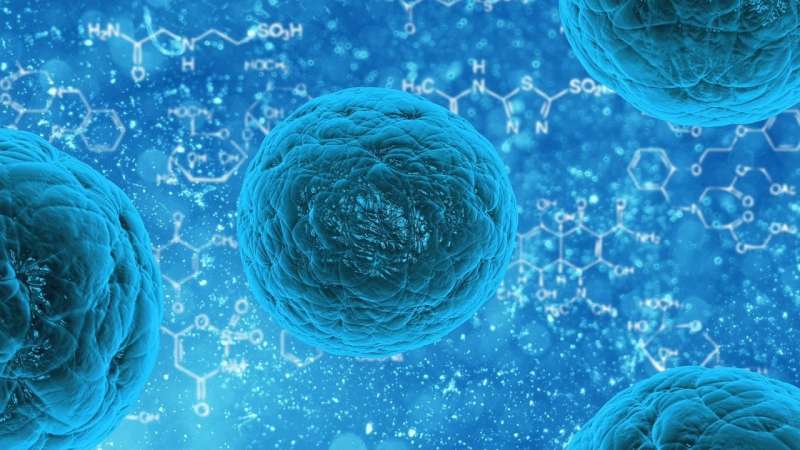Chemists create publicly available tool that provides unrivaled look at RNA inside cells

Stephanie Baum
scientific editor

Robert Egan
associate editor

The interior of a cell is packed with proteins and nucleic acids, such as RNA, all of which need to perform specific functions at the exact right time. If they don't, serious diseases—ALS, Huntington's or many cancers—can result. But what exactly is happening inside the crowded cell when it malfunctions, and how can these miscues be prevented?
Thanks to a pair of chemists at the University of Massachusetts Amherst, a new publicly available tool called provides an unrivaled look at the mysterious world RNA, and could help solve the mystery of how devastating diseases develop.
The research is in the journal Proceedings of the National Academy of Sciences.
Think of a cell as a busy traffic intersection. There are many organelles within the cell—lysosomes, the nucleus, Golgi apparatuses and mitochondria—with their own membranes that keep them separate from everything else, in the same way as a car keeps its occupants separate and protected from everyone else in the intersection. But just as there are also pedestrians, bicyclists, skateboards and other obstacles zooming in and among the automobile traffic, a cell has strings of unprotected protein and RNA mixed in with the organelles.
For decades, scientists have wondered how unenclosed proteins and RNAs could self-organize into membraneless organelles and stay separate from everything else in the cell until just the right time. It wasn't until 2009 that researchers first determined that during germline development, some of these unenclosed elements would condense into a self-enclosed, protected droplet due to phase separation—a process similar to how a homogeneous mixture of oil and water can separate into two distinct phases.
These "biomolecular condensates," as they came to be called, have the ability to phase separate under numerous cellular functions and interactions. Their malfunctioning has been linked to the development of various human diseases.
Central to the formation of these condensates are long, floppy biomolecules, including single-strand RNA and what are known as intrinsically disordered proteins, that are both enormously important to cellular function and magnificently difficult to study at the molecular level. While there are currently coarse-grained, low-resolution models that have given some insight into the world of RNA and intrinsically disordered proteins, until now there has been no efficient tool that can offer a more detailed window into how phase separation in RNA condensates work.
"This is a topic with intense interest in the field," says Jianhan Chen, professor of chemistry at UMass Amherst and the paper's senior author. "It's not for lack of effort that a model like ours, iConRNA, hasn't existed until now; it's just that it's extremely hard to build."
Chen points to the paper's lead author, Shanlong Li, postdoctoral researcher at UMass Amherst, and his "attention to detail, sharp physics intuition and strong sense of the best mathematical form to model various physical interactions of RNA" as keys to building iConRNA.
Part of what makes their model so powerful is that it resolves the balance of the distinct physical driving force of phase separation and can also predict how this balance is tuned under different cellular situations. "It allows you to 'turn the knob' of things like temperature and salt to see how they affect RNA's phase separation," Chen says.
Its performance tracks closely to experimental observations conducted in the lab, which means that for the first time, researchers can get a close look at one of the enduring mysteries inside every human cell.
More information: Shanlong Li et al, Driving forces of RNA condensation revealed through coarse-grained modeling with explicit Mg2+, Proceedings of the National Academy of Sciences (2025).
Journal information: Proceedings of the National Academy of Sciences
Provided by University of Massachusetts Amherst





















